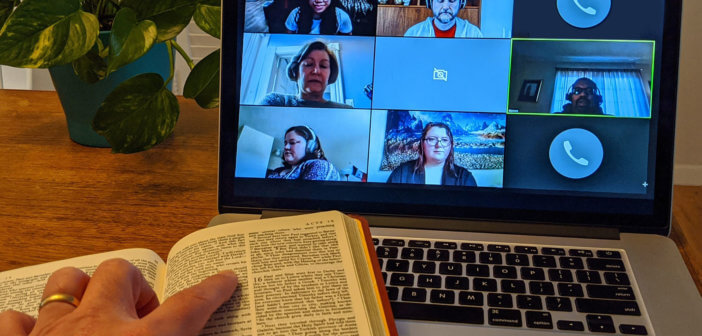How can congregations sustain a sense of community and care for one another when most gatherings have been suspended? Some simple strategies can be used to stay in touch with those who are isolated and maintain an ongoing spiritual presence says F. Douglas Powe Jr., Director of the Lewis Center for Church Leadership, and James C. Logan, Chair of Evangelism (an E. Stanley Jones Professorship), at Wesley Theological Seminary.
Efforts to contain the spread of the coronavirus have disrupted congregational life and patterns of day-to-day living in ways we never could have imagined. Most congregations have suspended worship gatherings and on-site programming. And it may be weeks or months before they can be resumed. One of the many challenges in this time of uncertainty and risk is how to stay connected, sustain community, and care for one another when so many people are isolated in their own homes.
Social Media
Many church leaders already use social media as a powerful ministry tool. But even for those who have not previously been very active in the digital realm, some simple social media strategies can help maintain a ministry presence and sustain a sense of community. An encouraging daily Facebook post from the pastor, or a post that asks “how can I pray for you today?” can be a reassuring spiritual presence. Interested in how online Bible study is done through Facebook? Just type Bible Study into the search bar on your Facebook page and you’ll see examples of how private Facebook groups and public pages can be used for Bible study and small group fellowship.
Ongoing Congregational Care
The fact that many of us are no longer meeting in person for worship, ministry events, and Bible studies should not curtail us from staying connected, checking on others, and offering care in creative ways. It may be by having a meal delivered to someone isolated at home. It may be by calling every day for a conversation. We continue to be bearers of hope by finding ways to show compassion even when we cannot meet in person.
Community Outreach
Extending this compassion to neighbors or others outside of the church can be a sign of hope for them. Imagine if as a congregation we bought gift cards or if possible brought take-out orders from a restaurant near the congregation to help a small business stay in business during these challenging times. We can be bearers of hope for that business.
Companionship
Everyone gets a little stir crazy when mobility is limited. For those who live alone with limited access to others this can be an especially challenging time. Finding creative ways to help individuals not go stir crazy can be a real gift. One example is playing a virtual game of chess or checkers with someone. By using our imaginations, we will see endless ways to be bearers of hope and to help those who are lonely feel connected.
Prayer
This is a time when prayer is essential. It is also an opportunity for us to pray for others who may not be in a faith community. If your prayer ministry doesn’t already have a phone tree or an email chain, this is a good time to put those systems in place. Another idea is announcing via your website and social media a set prayer time once a week when the community can be in prayer together, even when not physically gathered. You can invite people within and beyond your church community to share concerns in advance of this time of prayer. We can be bearers of hope for individuals who are seeking a way to share their burdens and joys.
As Christians, we have an opportunity now to be bearers of hope and authentic witnesses to the ways God continues to work in the midst of uncertainty.
Related Resources
- Leading the Church in the Face of Coronavirus by Bill Owen
- Resources for Church Leaders about the COVID-19 Pandemic by Tom Pruski
- 10 Ideas for Church Financial Leaders Amid the COVID-19 Crisis by Ken Sloane







